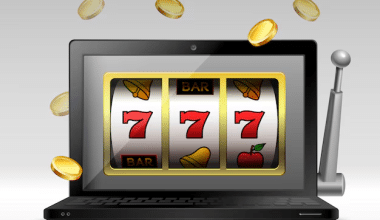The term “games as a service” (GaaS) is a recent innovation in the gaming industry aimed at defining certain types of games and their business model. The administration of microtransactions is one way that the Game as a Service model fosters player loyalty and participation. GaaS was developed to help bridge the gap between consumers’ worries about spending money and the desire to play games. It’s been shown to keep players invested in a game for much longer than the conventional pay-to-play model does, and it can help reduce customer acquisition expenses. Providing consistent value to customers over the long term is crucial to the success of the GaaS business model. Games as a Service help developers and companies diversify their revenue streams beyond the traditional one-time sale. GaaS gives games an edge in the battle for users’ time as the number of games released annually increases.
What Is Meant by Games as a Service?
Games as a service (GaaS) is the delivery of video games or game material on a subscription-based business model, analogous to SaaS in the software sector. Games as a service are a method of making money off of video games after they have been purchased or in conjunction with a freemium business model.
The goal of releasing games using the GaaS model is to keep gamers paying for the game for as long as possible. Hence, games that operate under a GaaS model are sometimes referred to as “living games,” “live games,” or “live service games” due to the fact that they are always evolving as a result of these updates.
The Evolution of Game as a Service
After the arcade period, games were sold individually so that they could be played on home consoles and PCs. This economic model treated video games like any other commodity: a one-time purchase. Generally, after purchasing a game, you would have unrestricted access to it indefinitely at no further cost.
Video games were still considered one-time purchases for a long time after digital distribution began. Similar to how physical game stores sell physical copies of games, so would digital storefronts sell digital versions of such games. GaaS, however, wasn’t well known as a method of purchasing games online until a small number of MMOs appeared.
World of Warcraft is an example of an MMOG that was released in 2004 and basically features a monthly subscription cost. Developers are able to keep up with monthly server maintenance and update thanks to this subscription charge. World of Warcraft is also “buy-to-play,” meaning that in addition to the monthly charge, you must also pay to own a copy of the game.
Team Fortress 2, released in 2007, is another MMOG that helped establish GaaS. To reverse the trend of falling player numbers, the 2011 release of Team Fortress made the game available for free on all platforms. However, to make money off of the free-to-play concept, Team Fortress 2 implemented in-game purchases like cosmetics and loot crates.
Subscription fees, loot boxes, and other forms of microtransactions like a season pass and downloadable content soon became standard fare for MMOs. Fortnite, Rocket League, Destiny 2, World of Warcraft, and Team Fortress 2 are just a few examples of today’s popular games that employ the Game as a Service paradigm.
Games as a Service Examples
#1. Candy Crush Saga
In 2012, this game was published as a web game and for mobile devices, making it the most popular freemium model game to date.
Candy Crush continued to be one of the most downloaded mobile games in 2014, with 93 million users on the platform and 2.7 billion plays on mobile devices.
This game is basically free to play. Making purchases, however, can simplify the completion of challenging boards.
#2. Fortnite
When Epic Games published Fortnite in 2017, it quickly became one of the most well-liked and lucrative Games as a Service.
In 2020, the game had 350 million users who logged over 3 billion hours of gameplay time. In addition, Fortnite generates revenue of about $1.2 billion in 2021.
Every three months, Epic Games would update and release a new season of Fortnite.
#3. League of Legends
League of Legends was launched by Riot Games for Windows and macOS in 2019. Playing League of Legends is basically free.
In 2023, the monthly audience will increase to 115 million gamers globally. Subsequently, riot games made the announcement that the game would be made available online without charge. Only seven years after its first release, League of Legends has become the most lucrative PC game in terms of revenue.
#4. World Of Warcraft
The first game as a service (GaaS) to use the monthly subscription model was Blizzard Entertainment’s World of Warcraft. It has since gained popularity thanks to its sizable and vibrant online community. Since its release in 2004, the game has generated $8 billion for its producers as of December 2020. The last time the number of gamers was disclosed in 2015, it totaled 5.5 million.
#5. Dota 2
In 2010, Valve launched a multiplayer online battle game called Dota 2. The game is free to play, and players do not need to pay anything to participate. However, Valve has bundled in a paid membership service called Dota +. Valve offers Dota Plus, a monthly subscription service, and loot boxes for sale in order to sustain the games as a service model.
The Dota Plus helper, for example, is one of the service’s primary resources for newcomers, according to Valve. At the selecting stage, the assistant makes suggestions for things based on the teams’ chosen heroes and the lines shown. It will present three item sequences and a list of additional common purchases throughout the game. Also, the assistant offers advice on which hero to select based on the situation and assists with talents that should be researched first during the game. The assistant also aids in getting on the right fighting line, displays a thorough analysis of the game, and displays a likelihood of winning graph in addition to a summary of deaths reflecting the history of incoming damage.
#6. Destiny 2
The 2017 video game Destiny 2 was created by the US studio Bungie. This video game is a first-person shooter and it’s also compatible with PC, Xbox One, and PS4 for play.
Steam, the stadia cloud service, the PlayStation 5, and the Xbox x/s console series all now support the game as of 2019.
Bungie’s addition of additional features and objectives boosted the game’s popularity, and by 2021, it had 31 million users.
#7. Dragon Eternity
This is a freemium game that you can play on both desktops as well as mobile devices. Produced by Q1 and released by Game Insight in 2011, Dragon Eternity has gained a lot of attention since its debut.
A web adaptation of “Dragon of Eternity” for mobile platforms like iOS and Android may be accessible on Facebook.
#8. Pokemon Go
Although there is no cost to play Pokemon Go, there are in-game accessories where players may purchase various things to aid in their game progression while also helping them catch more Pokemon.
To buy anything in the shop, you’ll need Pokecoins (the game’s virtual currency). Also, you can purchase an additional room for your Pokémon collection by using Pokecoins. In addition, you acquire more room as you play more.
SuperData researchers estimate that gamers spent $14 million on the game in its first four days. As of 2021, the lifetime earnings of game developers totaled more than $5 billion. The game had more than 70,000 average monthly players as of July 30, 2021.
Games as a Service Model- How it Works
The following are the main features of the Games as a Service distribution model:
#1. Microtransactions
These are purchases of in-game stuff such as characters, items, rewards, maps, as well as weaponry. Although these payments are optional, the idea behind this approach is to persuade gamers to do so in order to enhance their gaming experience.
#2. Updates on a Regular Basis
Regular, but not excessive, updates are necessary for games as a service. Finding the sweet spot between too much and too little can make or break your game. For instance, gaming industry juggernauts like Epic Games or Bethesda Softworks regularly release new “seasons” for their titles every three months.
#3. Community.
Generally, any game’s most important resource is its players, and socially engaged players are even more precious. These individuals specifically create a community around your game, both inside the game and on social media.
#4. Support.
Even in the pre-launch phase of a GaaS, developers must provide ongoing assistance to users. So, try user segmentation as the number of participants increases, because there will surely be an increase. Sort the participants by various factors, such as whether they are paying customers, regulars, etc. To accelerate the pace of responses, you can as well adopt automated systems.
#5. Marketing Efforts
Make sure to buy traffic annually, start global marketing, connect with influencers, optimize the game for SEO/ASO, and other strategies to keep your game active.
Games as a Service Business Models
Several GaaS business models employ strategies to make money from the game experience.
#1. Selling Players In-Game Content
Players pay a small fee for a rapid transaction when purchasing in-game stuff using this business model. You can buy things or perhaps open up additional levels. However, to access a new feature, you might need to pay a modest fee; this process is known as “in-game purchases”.
#2. Pay-to-Play
Customers that purchase pay-to-play games do so in order to play them, own a copy of them, and have access to them. For some games, such as World of Warcraft, it is recommended to employ pay-to-play up until a particular level.
However, in this case, it is best you first ask yourself if you really care about or have so much interest in playing the game. If it does, then you can pay a charge each month to become a subscriber.
#3. Ad Placements
GaaS has a huge market and a lot of participants, thus there are lots of opportunities for you to place ads there.
In order to raise brand exposure and revenue, several developers display their advertisements as films on loading screens.
#4. Paying for New Content
The in-game revenue can be raised by adding additional content. For instance, the popular online game Fortnite releases brand-new material on a consistent basis in order to retain user engagement and the game’s ability to generate revenue.
#5. Game Bundles
Game bundles are collections of games that offer a significant discount when purchased together. These are generally available for purchase by users at a cheaper rate.
They are an excellent method for engaging new users and generating new leads on an existing product that is not particularly well-liked.
#6. Cloud Gaming Services
To use a cloud gaming service, a subscription fee is basically a necessity but you can pay this fee on a monthly or annual basis.
The customers do not need to pay separately for each game because the games are housed in the cloud and are part of the subscription fee.
Sony PlayStation Now, Steam, Amazon Luna, and a number of other platforms are examples of cloud gaming services.
Games as a Service Companies
Game enthusiasts may now enjoy their favorite titles regardless of the capabilities of their gaming hardware thanks to the advent of cloud gaming. Cloud computing allows for instantaneous game streaming without the hassle of installing patches or upgrades.
A lot of progress has been made in cloud gaming since the hype train departed the station in 2018. The game has progressed to the point where you can sit down and start playing without being bogged down by glitches most of the time, though this is by no means guaranteed.
Wi-Fi 6 and 6E, as well as 5G cellular coverage, has helped smooth out the bumps in the network, but problems still exist. But, if you reside or visit an area with inadequate access or if your broadband rates are prohibitive, this is still not a viable alternative.
Those who don’t have an expensive gaming PC can still enjoy the newest titles thanks to cloud gaming services. Several major IT firms, including Nvidia, Microsoft, Sony, and others, have announced their intention to compete in the growing cloud gaming market. Cloud gaming has advanced significantly in recent years, and the convenience of playing on any device without installing any special software or checking for patches is a major selling point.
However, deciding which Games as Service companies is ideal for you might be challenging because there are so many fantastic games and options to select from.
Nevertheless, below are some of the top best Games as a Service companies to choose from;
- Xbox Game Pass Cloud Gaming
- Nvidia GeForce Now
- NEW! CNET Shopping Extension
- Amazon Luna
- PlayStation Plus Premium
Conclusion
GaaS is special since it is a relatively new concept in the games business for video games to be services that you pay for over time. This kind of concept last gained popularity in the game industry during the bygone arcade era, when using an arcade required paying quarters.
Yet, this new Games as a Service model is considerably more comprehensive and configurable than arcades. The Games as a Service model offers a variety of payment alternatives, making it suitable for every project.
While Games that are free to play can use the Games as a Service model to monetize their offering while keeping entry barriers low. Buy-to-play games after their initial release can also leverage the GaaS model to increase their revenue.
Related Articles
- How Is Mobile Gaming Changing the Gaming Industry?
- 31+ Best Game Affiliate Programs In 2023
- 30 Top Best GAMING AFFILIATE PROGRAMS in 2023 (+ Free Tips)
- MAKE MONEY FROM YOUR PHONE: Free Tips.
- Online Casino Business Opportunities: 10 Easy Steps You Need
- The Evolution of Gaming: IT Innovations Transforming Casino Experiences






